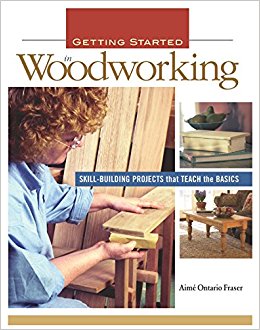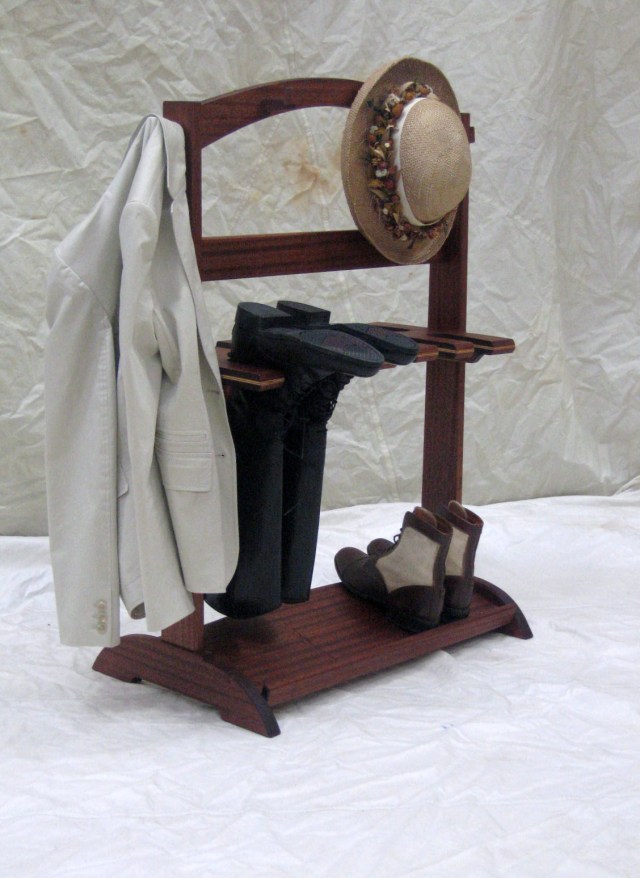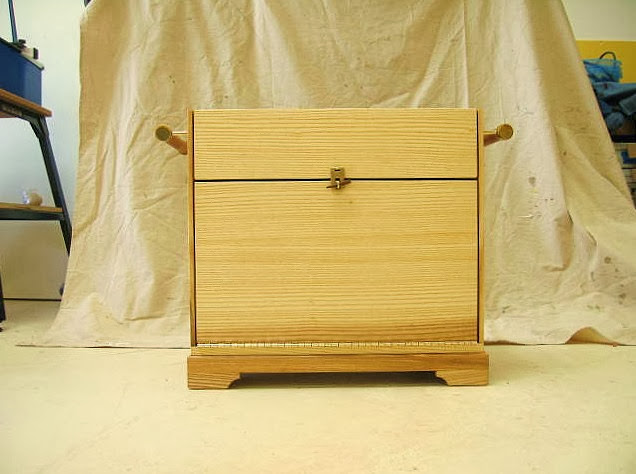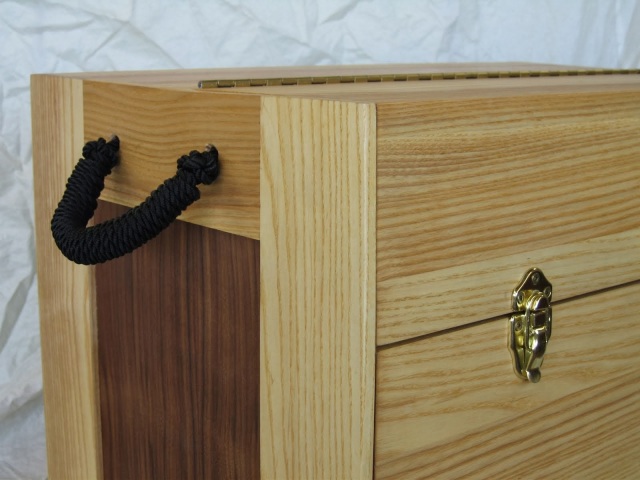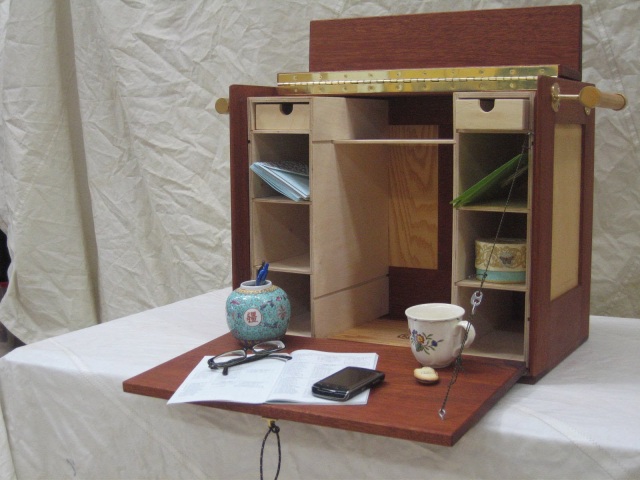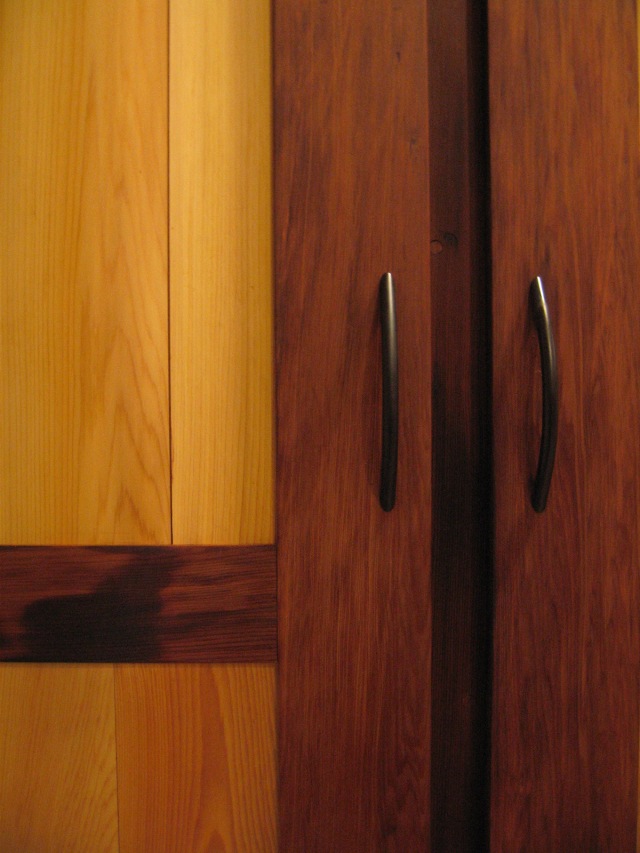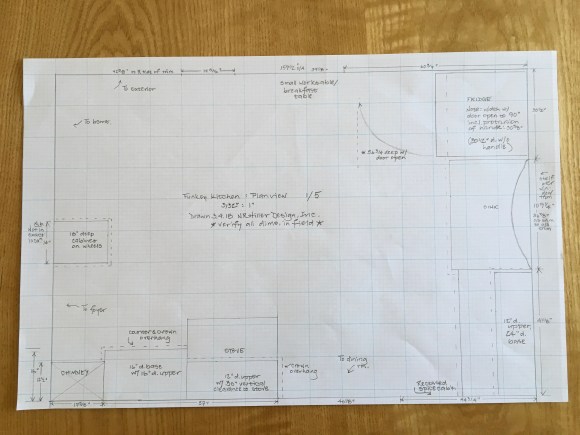
Editor’s note: On this day (Aug. 24) in 79 C.E., Mount Vesuvius erupted, killing thousands and forever changing the course of archaeology. The ash that covered the nearby towns was devastating, but it also created a detailed snapshot of everyday life. It also gave us the two earliest images of workbenches in the West. To remember this day, here is the first chapter of “Ingenious Mechanicks,” which is about my visit to the volcano.
The journey to the summit of Mount Vesuvius has all the romance of visiting an unlicensed reptile farm. It begins in Ercolano, Italy, a touristy village in the shadow of the volcano and home to Herculaneum, one of the towns buried by Vesuvius’s eruption in 79 C.E.
As Narayan Nayar (the photographer for the journey) and I stepped off the train from Naples we were assaulted by young, attractive Italians. Their job: Bait tourists to nearby restaurants. We glanced around and saw only one escape route from the train station’s cul-de sac. So, we plowed through the crowd of eager human fishing lures.
We emerged from the other side a bit relieved. Then we realized we’d scurried past the bus company that was supposed to drive us up the volcano. We turned around and dove back into the swarm of too-perky people in order to catch our bus.

The twisty-turny bus ride ended 660 feet below the volcano’s summit, and we then climbed a steep trail to the volcano’s rim. The top resembles a gravel pit where one of Frank Herbert’s worms might emerge. There’s no deep hole for tossing human sacrifices – throw a virgin into Vesuvius and she’s only going to get skinned knees and a sunburn. I looked around the volcano and promptly excused the early settlers of the area for building their homes at the base of Vesuvius. The only evidence you’re on a volcano (besides the little gift shops) is the occasional tiny plume of gas and the odd rocks below your feet.
I picked up a few rocks. For rocks, they were young – likely the result of the 1944 eruption, which destroyed several villages. I looked out from our 4,200-foot perch at the buildings in every direction below, which are built on top of villages that were covered in ash from earlier eruptions. It’s a grim scene if you think about it too much – 600,000 people now live in the so-called “red zone” for a future eruption.

And yet, as I fondled the rocks in my hand I felt only gratitude for this deadly, fire-breathing mountain.
The Earliest Workbenches
The recorded history of woodworking begins with the Egyptians. But the recorded history of workbenches begins (for now) with Vesuvius. Its massive eruption in 79 C.E. buried Pompeii, Herculaneum and other sites, preserving frescoes, buildings, pottery, human remains and even wooden furniture.
At Pompeii, the ash blanketed a fresco showing a low, four-legged workbench being used for mortising by a man in Greek attire. At nearby Herculaneum, the eruption preserved a fresco showing “erotes” – what we might call “buck nekkid cupids” – sawing a board at an eight-legged low workbench. It features a holdfast and other holdfast holes. This fresco has since been destroyed, but we have engravings that were made soon after its discovery (more on both the frescoes’ stories is ahead).

These two images are the earliest representations of workbenches of which I’m aware. And they launched my interest in exploring knee-high workbenches and how to use them to build furniture, boats, storage containers and wagon wheels.
The conventional wisdom is that these low benches were used in former times for simple work and were replaced by superior modern benches, which are thigh-high or taller. But the more I studied low benches, the more I found that they never disappeared. They are still in use. Additionally, these low benches can be used for complex work, including steam bending compound shapes and lutherie.
The low bench is more than a thick plank of wood with legs. It’s also a collection of simple jigs and appliances that allow you to do remarkable work while sitting comfortably on an easy-to-build platform. For centuries, these simple jigs remained hidden in plain sight in paintings and drawings in museums. And their appliances have been proven to work, both at my low benches and by the modern craftsmen who still use them.
But why bother with this musty old crap? Modern woodworkers are blessed with a wide array of vises, dogs, clamps and other devices that can immobilize a piece of wood so you can work on its faces, edges and ends.
Well, at times I think we tend to make our workholding far more complex than it has to be. And that can affect your approach to the things you build. While your brain might see the logic of a screw-driven tail vise with a series of movable metal dogs, the ingenious early craftsman might find this same vise slow, fragile, fussy to maintain and cumbersome in use.

I empathize with the early woodworker. My brain is wired to look for a simpler solution to a problem instead of creating complexity.
Example: Earlier this year, I spent a couple hours in the dentist’s chair and was force-fed several episodes of a home-improvement show focused on carving out storage from oddball places in a home. Some of the examples I remember over the whirring of the dental Dremel include:
• Hinge your steps to create trap doors on the landings of your stairs to make small bins in the wasted space between your stringers.
• Find stud walls that are chases for utilities and turn them into built-in chests of drawers.
• In attic spaces, create sliding racks on the interior of a high-pitched roof. You slide giant plastic bins into the racks – it’s a bit like a top-hanging drawer.
Through the entire program I wanted to puke (that was mostly because I have a sensitive gag reflex). But it was also because these “storage solution” programs neglect to mention the easiest way to control clutter:
Get rid of your excess crap.
No one should have so much stuff that they have to slave excessively to make a place to stow it. In the same way, no workbench needs vises on all four corners (I’ve built these for students and customers) to build fine furniture. You just don’t.
With this book, I hope to expose you to early and simple ways of holding your work. While many of these devices were used on low workbenches, most of them work on high workbenches as well. I use both sorts of benches – high and low – in my work for building all manner of things, from stud walls to Welsh stick chairs, dovetailed chests to nailed-together coffins.
The workholding on these benches is truly ingenious and effective. Things change when you sit down to work. And I think you’ll be surprised what you can do on your bum: planing, chiseling, shaving and even dovetailing.
The low bench form might not be for everyone. But it might be right for you and you might not know it. Woodworkers with limited mobility use low benches because they can sit and work. Apartment woodworkers use low benches because they take up little space and do double-duty as seating or a coffee table. Curious woodworkers use them because – dammit – they are an interesting form to build and use. Many chairmakers already use a low bench (but they call it a shavehorse), as do many other specialty trades, including coopers and basketmakers. Oh, and a low bench is the best sawbench ever made – promise.
One more plug for these early benches: Using their lessons, you can make almost any surface into a worksurface. A couple drywall screws can turn a picnic table into an English-style workbench. A missing brick in a wall (and a pine wedge) can become a face vise. A shavehorse can be cobbled together with a rock and a scrap of wood strapped to your gut.
Even if you never build a low workbench and reject its appliances as “not whiz-bang-y” enough for your engineering mindset, you might enjoy the journey of discovery required to write this book. It involved trips to exotic Italy, Germany and Indianapolis. (And understanding the low bench might connect your work to Chinese benches.) In the process, we rescued oak slabs from a pallet factory. We flushed $1,000 down a metaphorical toilet to learn about the construction of the first modern workbench in 1505. We ate a ton of Neapolitan pizza.
Workbenches are at the heart of everything we do. So, let’s take a brief look at the history of Western workbenches and consider why it’s even worth looking at ancient benches.


